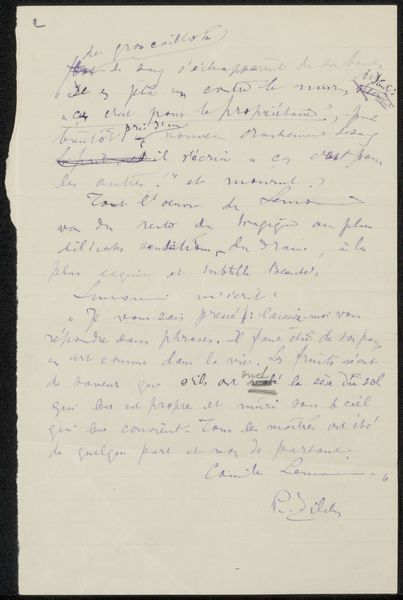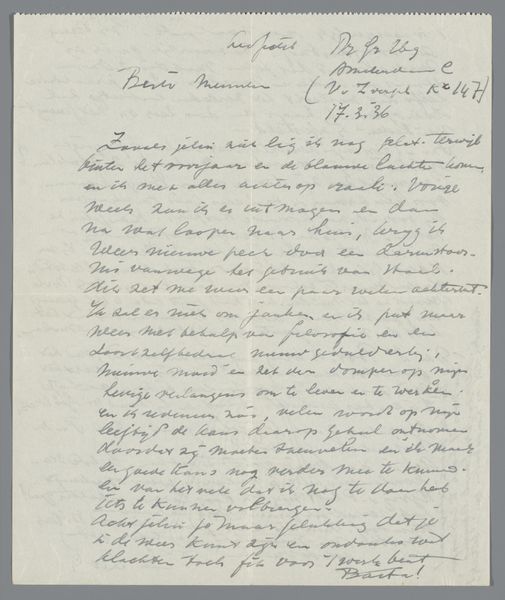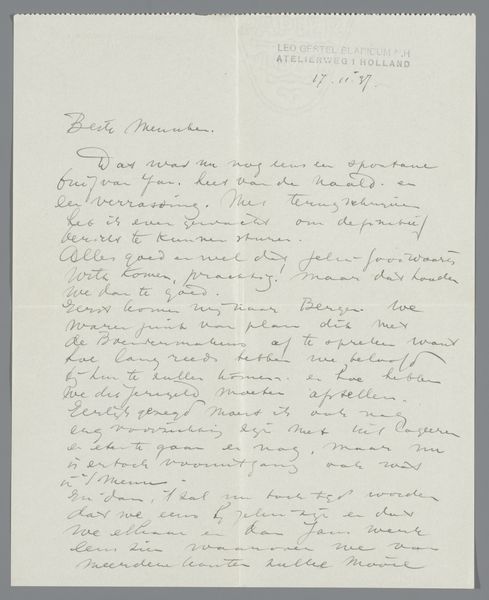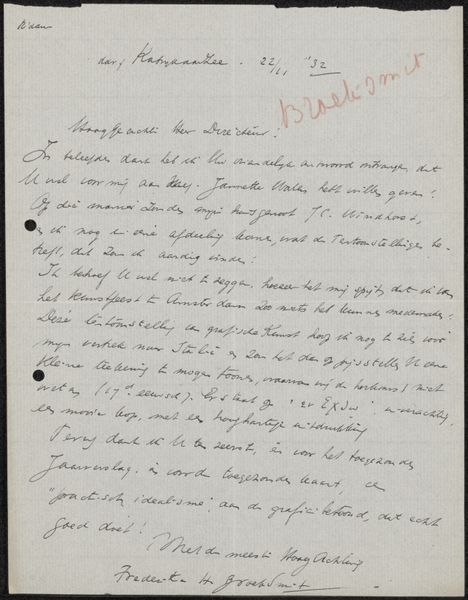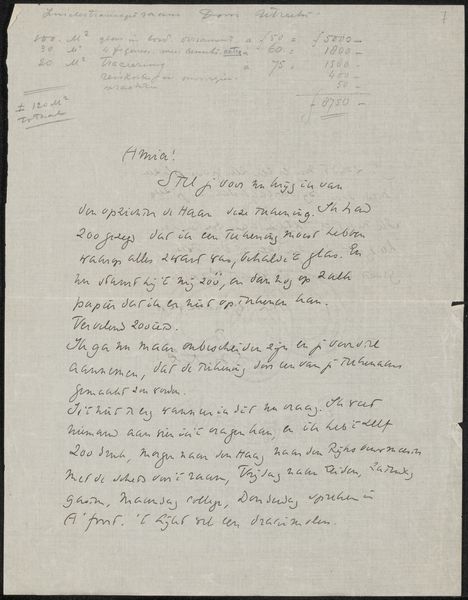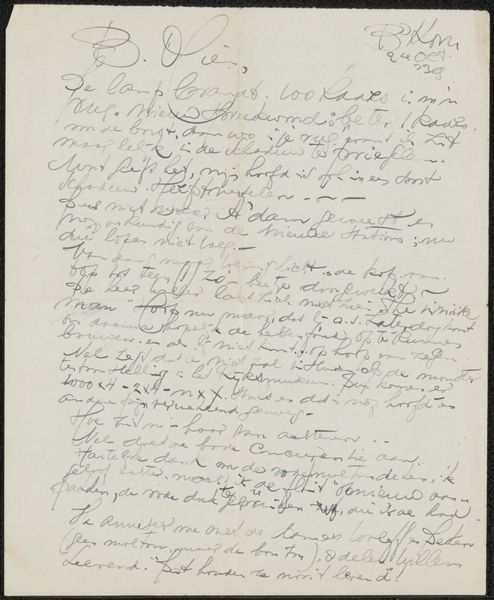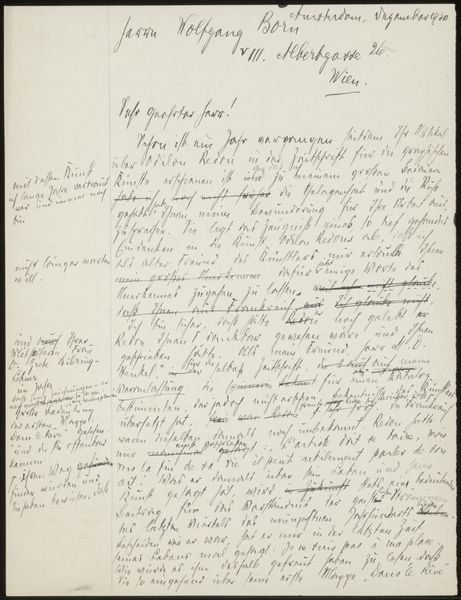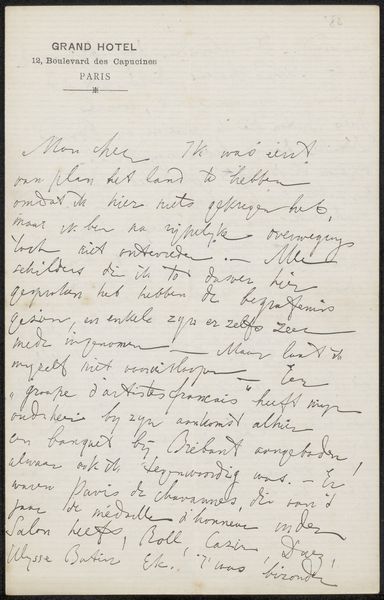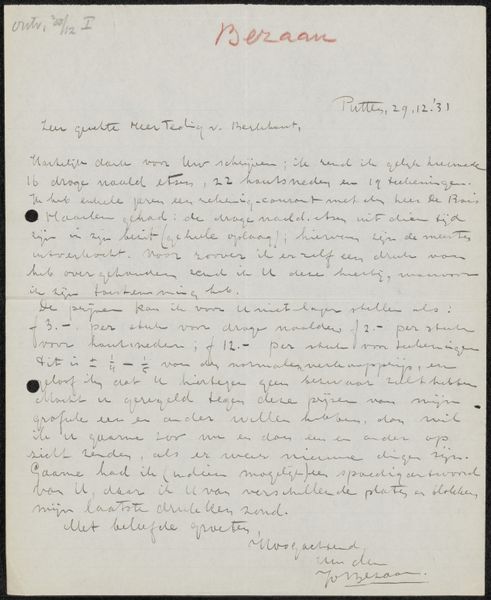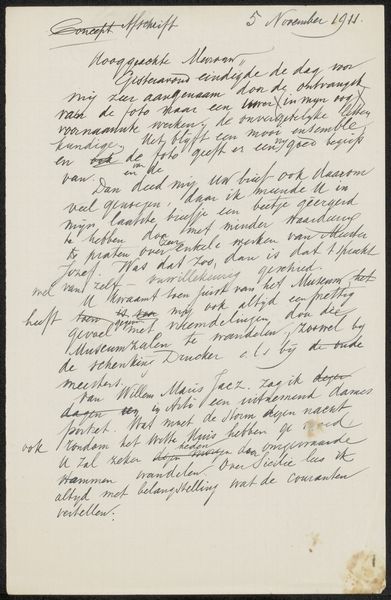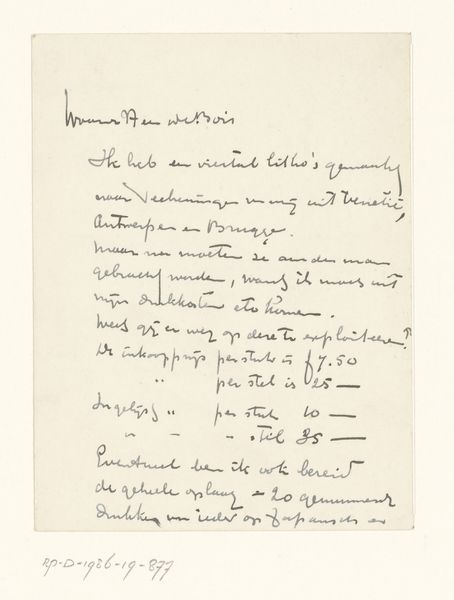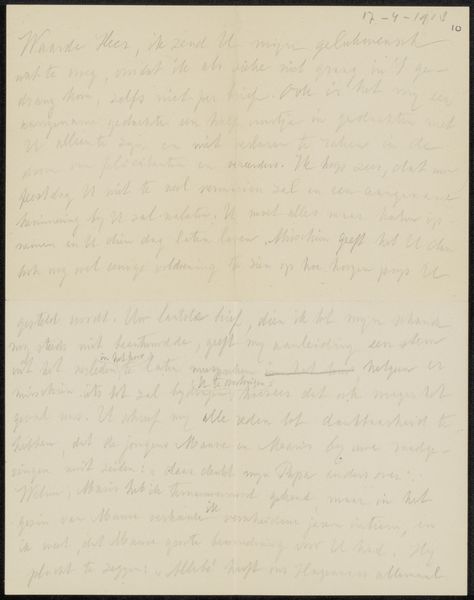
Brief aan Jan Ponstijn en Henriëtte Johanna Petronella van Hilten c. 1900 - 1945
0:00
0:00
drawing, paper, ink
#
portrait
#
drawing
#
paper
#
ink
#
journal
Dimensions: height 253 mm, width 211 mm
Copyright: Rijks Museum: Open Domain
Curator: Looking at "Brief aan Jan Ponstijn en Henriëtte Johanna Petronella van Hilten" by Leo Gestel, likely created between 1900 and 1945. It's currently held in the Rijksmuseum collection, rendered in ink on paper. Editor: My first impression? It's surprisingly intimate. Even without knowing the language, the delicate script and the casual layout create a sense of peeking into a private exchange. It’s raw and personal. Curator: Precisely. The choice of ink on paper is crucial. It signifies immediacy, directness. This wasn't intended for public consumption, and its inherent ephemerality reflects that. It's a tangible connection to a specific time, a specific person writing in their moment. Think about the production of ink, the sourcing of the paper itself. Editor: It's fascinating how this seemingly commonplace artifact—a letter—has now become an artwork. Museums inherently reshape our perception, transforming what were once everyday objects into objects of veneration, of cultural significance. Did Gestel envision this ending up in a museum? Curator: Highly doubtful. This challenges the hierarchy. Gestel likely viewed this as a functional object first, its artistic merit perhaps secondary. And yet, the inherent act of creating—writing, composing thoughts onto paper—contains its own artistry. Editor: I wonder what determined its preservation while countless others were discarded? What are the politics involved? Someone had to deem it valuable, archive it, preserve it... the institutional framework around its survival is something that’s very interesting to me here. Curator: A lucky survival indeed. And I agree—its value lies not just in its possible artistic flair but as a historical record, an insight into social networks, and daily life during the period. You can almost feel the material reality, smell the paper, the ink and try to imagine what was surrounding this. Editor: This prompts a re-evaluation of artistic merit altogether. Perhaps artistic intent isn’t a prerequisite. In examining such everyday materials, we learn how social value can be constructed, especially within institutions. Curator: Yes, by understanding the circumstances of its creation and later interpretation, it gains more historical and perhaps social power. It's less about Gestel’s supposed genius, but the socio-economic currents which have carried and sustained it as a point of interest. Editor: Exactly, a great observation—thank you. I feel quite privileged now for having spent time considering the hidden dialogues, which are almost literally hidden inside a journal. Curator: Thank you, this ink on paper shows there are important conversations happening between what survives, how, and why, to offer a tactile entry to histories long past.
Comments
No comments
Be the first to comment and join the conversation on the ultimate creative platform.
